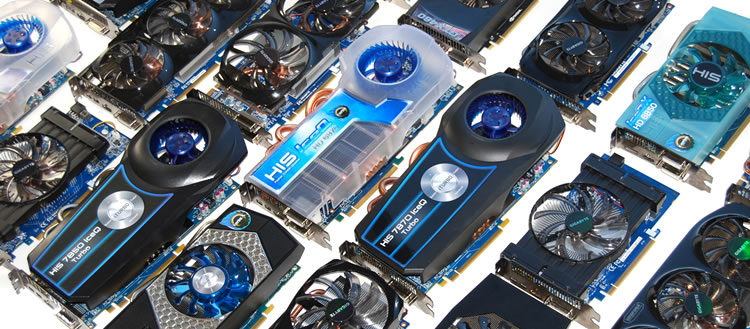Benchmarks: Call of Duty: Black Ops II, Crysis 2
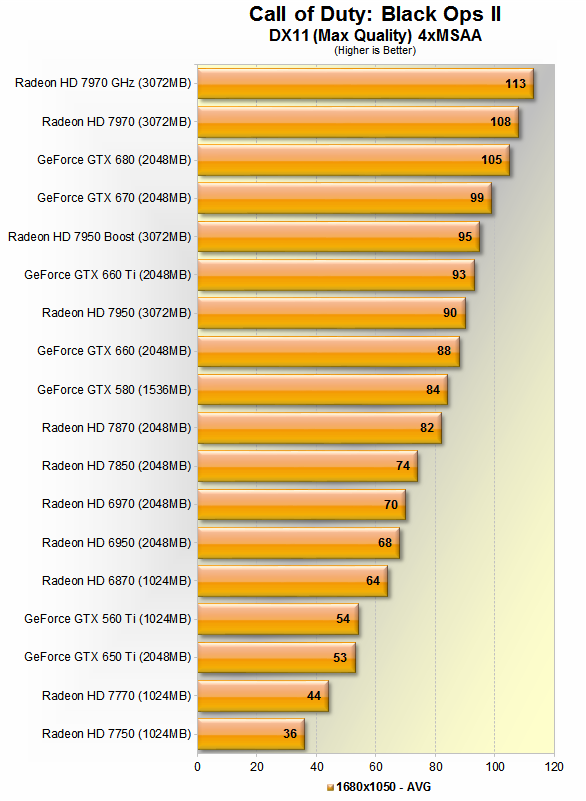
The GeForce GTX 650 Ti averaged 53fps at 1680x1050 when testing with Call of Duty Black Ops II, making it 20% faster than the Radeon HD 7770 and 47% faster than the 7750, and yet it was still 17% slower than the old Radeon HD 6870.
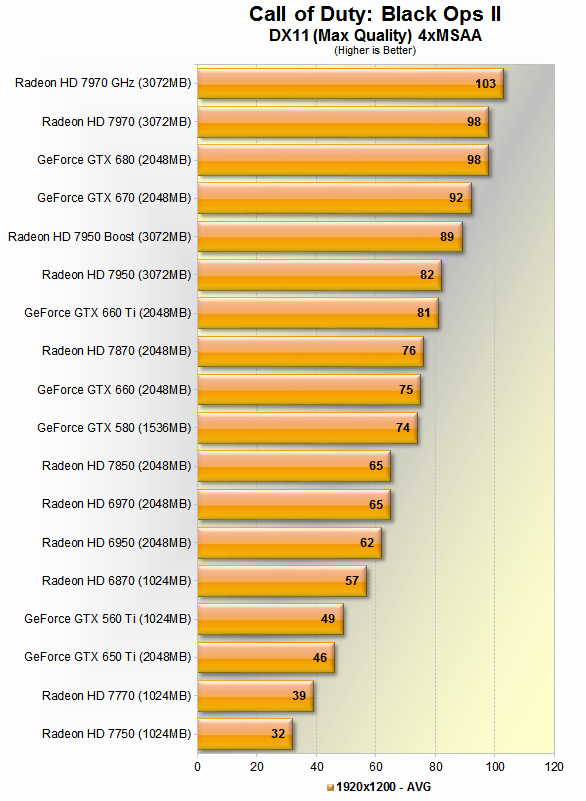
The 1920x1200 resolution saw the GeForce GTX 680 and Radeon HD 7970 average 98fps, making them just 5% slower than the 7970 GHz Edition. The GeForce GTX 670 performed well averaging 92fps making it 12% faster than the Radeon HD 7950 and 3% faster than the 7950 Boost.
The GeForce GTX 660 Ti was 1% slower than the Radeon HD 7950 and 7% faster than the 7870. The GeForce GTX 660 on the other hand was 1% slower than the Radeon HD 7870, yet 15% faster than the 7850.
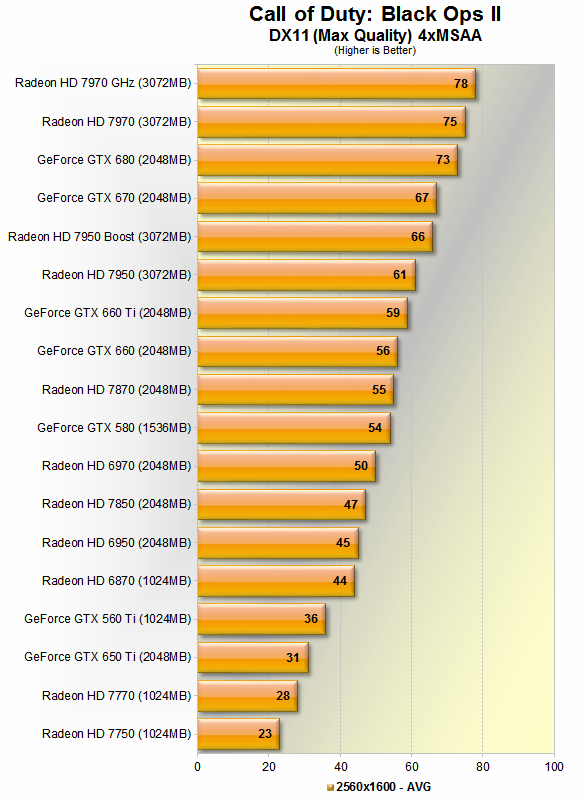
The GeForce GTX 680 averaged 73fps at 2560x1600 in Black Ops 2 and despite that impressive frame rate, was still 3% slower than the Radeon HD 7970 and 18% slower than the 7970 GHz Edition. The GeForce GTX 670 was 10% faster than the Radeon HD 7950 and 2% faster than the 7950 Boost.
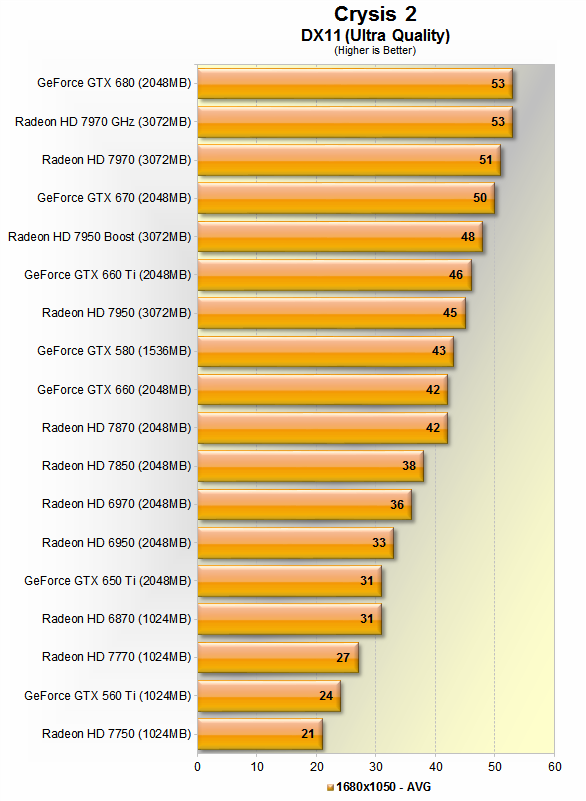
When testing Crysis 2 at 1680x1050 the GeForce GTX 650 Ti and Radeon HD 6870 both averaged 31fps, making them 15% faster than the Radeon HD 7770 and 48% faster than the 7750.
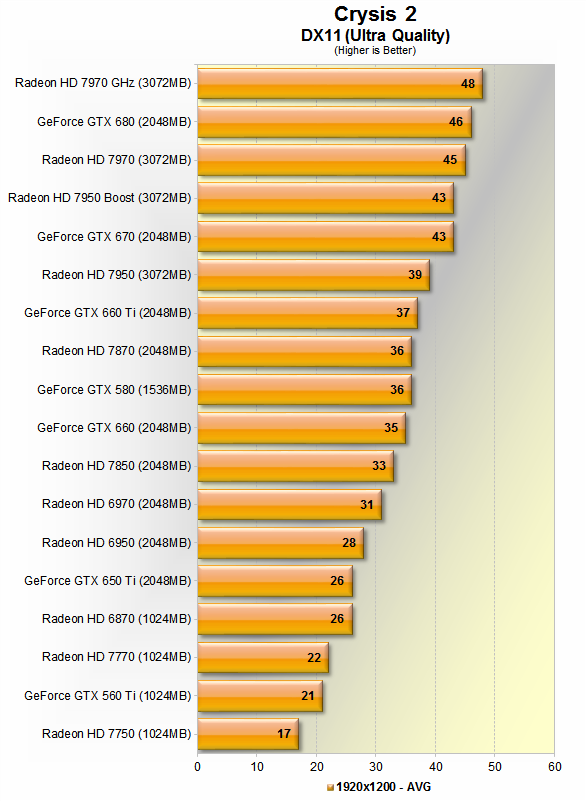
The GeForce GTX 680 managed 46fps at 1920x1200, making it 2% faster than the Radeon HD 7970 and 4% slower than the 7970 GHz Edition. The GeForce GTX 670 was able to match the performance of the Radeon HD 7950 Boost with 43fps making it 10% faster than the standard 7950.
The GeForce GTX 660 Ti averaged 37fps which meant that it was 3% faster than the Radeon HD 7870 and just 5% slower than the 7950. The GeForce GTX 660 was 3% slower than the Radeon HD 7870 and 6% faster than the 7850.
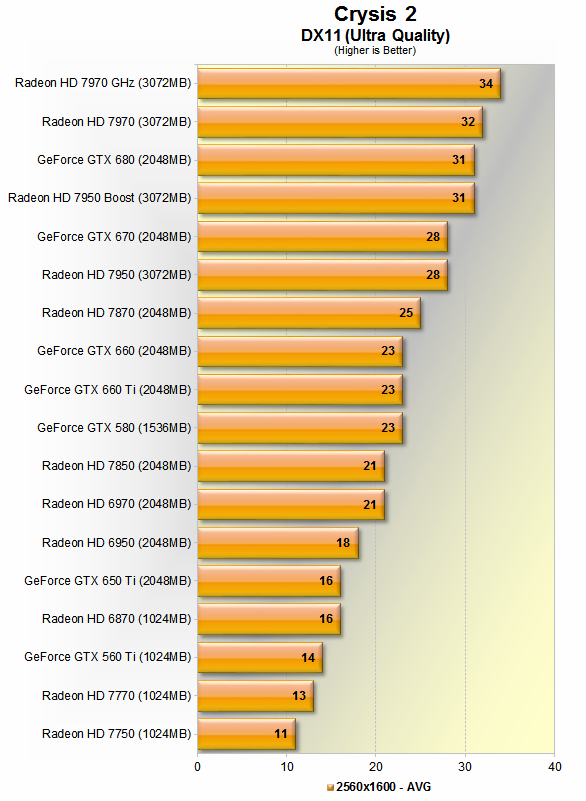
Now at 2560x1600 the GeForce GTX 680 drops down to an average of 46fps, which meant that it was 3% slower than the Radeon HD 7970 and 9% slower than the 7970 GHz Edition. The GeForce GTX 670 also suffered at 2560x1600 and is now only able to match the performance of the Radeon HD 7950, making it 10% slower than the 7950 Boost.
